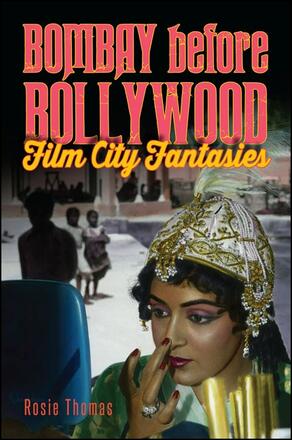
Bombay before Bollywood
Film City Fantasies
Alternative formats available from:
Traces the development of Indian cinema from the 1920s to the mid-1990s, before "Bollywood" erupted onto the world stage.
Description
Bombay before Bollywood offers a fresh, alternative look at the history of Indian cinema. Avoiding the conventional focus on India's social and mythological films, Rosie Thomas examines the subaltern genres of the "magic and fighting films"—the fantasy, costume, and stunt films popular in the decades before and immediately after independence. She explores the influence of this other cinema on the big-budget masala films of the 1970s and 1980s, before "Bollywood" erupted onto the world stage in the mid-1990s.
Thomas focuses on key moments in this hidden history, including the 1924 fairy fantasy Gul-e-Bakavali; the 1933 talkie Lal-e-Yaman; the exploits of stunt queen Fearless Nadia; the magical neverlands of Hatimtai and Aladdin and the Wonderful Lamp; and the 1960s stunt capers Zimbo and Khilari. She includes a detailed ethnographic account of the Bombay film industry of the early 1980s, centering on the beliefs and fantasies of filmmakers themselves with regard to filmmaking and film audiences, and on-the-ground operations of the industry. A welcome addition to the fields of film studies and cultural studies, the book will also appeal to general readers with an interest in Indian cinema.
At the University of Westminster in the United Kingdom,Rosie Thomas is Professor of Film, Faculty of Media, Arts, and Design, Director of the Centre for Research and Education in Arts and Media, and Co-Director of the India Media Centre.
Reviews
"In this powerful account, Rosie Thomas opens out filmic artifacts to an array of dazzling reflections shedding new light on the movement and circulation of popular culture in India. With a remarkable body of research conducted over a period of time, Bombay before Bollywood decisively challenges certain assumptions about India, its cinemas, and its audiences. " — Ranjani Mazumdar, author of Bombay Cinema: An Archive of the City
"This is the archaeology of media performed with intellect, wit, and passion. Rosie Thomas pioneered this field and she remains its most brilliantly iridescent critic and advocate. If only all film studies were this revelatory and this enjoyable!" — Christopher Pinney, author of Camera Indica: The Social Life of Indian Photographs
"Rosie Thomas's body of research over the last twenty-five years has set up key discourses in the study of Indian popular cinema. This book brings together her pioneering fieldwork into film industry categories and practices, and her more recent bid to resurrect a history made well-nigh clandestine by official narratives: the significance of Arabian Nights fantasies, stunt films, and visceral attractions in Bombay cinema. Pleasurably crafted and provocatively argued, Bombay before Bollywood is an important intervention in Indian and world cinema studies. " — Ravi Vasudevan, author of The Melodramatic Public: Film Form and Spectatorship in Indian Cinema